- Author Arianna Cook [email protected].
- Public 2023-12-17 14:23.
- Last modified 2025-06-01 07:38.
There are many diseases and pests of strawberries, but if you know how to deal with them with folk and chemical means, when to apply these solutions, then your harvest of sweet berries will always be excellent! Garden strawberries or, as they are often called, strawberries are loved by many, so very often they are grown by gardeners on their backyards. But it is very offensive when, due to diseases and pests, instead of a bountiful harvest, it is possible to get only a scanty part of it. To prevent this from happening, you need to know which strawberry diseases manifest themselves, as well as what methods of dealing with this scourge.
Diseases of garden strawberries
The main viral infections that affect the harvest and can significantly reduce it: fusarium and late blight wilting, gray rot, powdery mildew, brown leaf spot, white leaf spot. Let's take a look at how specific strawberry diseases manifest themselves.
Fusarium and late blight wilt of strawberries
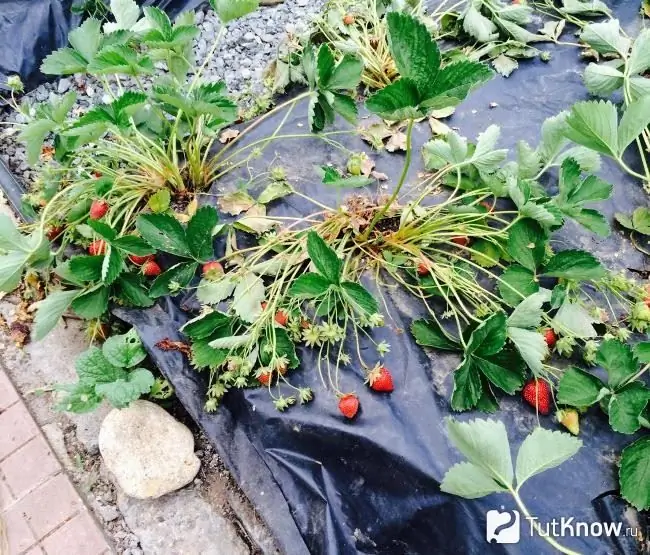
If necrosis appears at the edges of the leaves, the leaves and petioles gradually turn brown and then die off, then the strawberry plantation has undergone a disease called fusarium wilt.
If the bushes of garden strawberries are lagging behind in development, the axial cylinder of the plant has become reddish, and the leaves have acquired a grayish tint, their edges are bent upward - these are symptoms of late blight wilting. Another sign of it is the subsequent dying off of the fibrous roots.
In order to prevent the appearance of these diseases, purchase planting material in proven, reputable places - large horticultural centers, fruit nurseries. In one place, strawberries can only grow for 4 years, then its thick root reaches a level above the ground. In the soil, there are fewer nutrients specifically for strawberries, and plantings are often affected by viral infections, including this one.
So that you always have bountiful harvests, strawberries are less susceptible to diseases, plant them in late summer - early autumn every year. In the first year, it does not bear fruit abundantly, but you will receive a large harvest due to older plantations, and the new one will delight you with many berries in the second year.
Another measure will help to resist late blight and fusarium wilt. Before planting, dip the roots of the plant first in a solution of "Potassium Humate", then - "Agata". To prepare the first, dissolve 15 grams of the drug in 1 liter of water, and for the second you need to take 7 grams of Agat and dilute it also in one liter of water.
Gray rot on strawberries
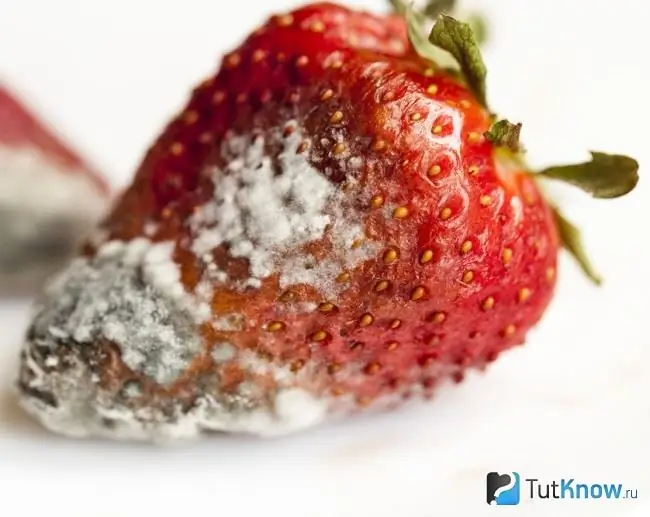
It can destroy most of the crop - up to 80% of the berries! It is easy to find it: if you notice spots of light brown color with a fluffy bloom on the fruits, it means that it is gray rot. A gray coating quickly spreads over the berry and affects the neighboring one. At the same time, dark gray or brown spots appear on the leaves, and the stalks and ovaries dry out.
If isolated cases of this disease are found on the plantation, collect berries affected by gray rot and destroy them. Mulch the soil under and around the bushes with pine needles or chopped straw. If the fruits do not touch the ground, they are less likely to develop gray mold.
When laying the plantation, after digging the soil, make ridges and cover them with a thick film folded in half. Then cut out round holes, pour 1/4 tsp into each humus.fertilizer for strawberries, mix, water and plant strawberry bushes. Weeds will not grow under the film, watering will be reduced, berries will not touch the ground, and gray rot will not annoy the fruits.
If you want the strawberry plantation to be decorative at any time of the year, lay a blue laminate underlay on top of the film. Roofing material can be used instead of a film.
If gray rot has affected not only the berries, but also the bushes, then you will have to destroy the plant completely. It will help prevent the appearance of this and other diseases of strawberries on the site; compliance with crop rotation, timely collection of berries, weeding with the destruction of weeds.
In the spring, before flowering, spray strawberry plantings with a solution of Bordeaux liquid at a concentration of 2-4%, and after harvesting, spray it with Azocene. Plants can be treated with a biological product "Fitosporin". Unlike chemicals, this one can be used on a berry, and eat it in a day.
White and brown spot of strawberry leaves
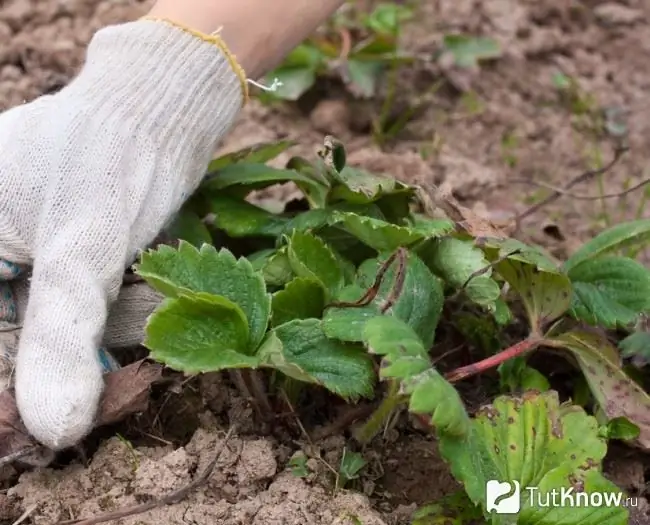
Signs of white spot: dotted brown and purple spots on the leaves, and brown spot - sepals and leaves are covered with brown spots, which gradually merge. Because of this, the leaves quickly turn yellow and then die off. This disease is dangerous because it can kill many strawberry bushes that are next to each other.
To reduce the likelihood of plant damage by these diseases, in early spring, when the snow melts, you need to cut off the old leaves and dispose of them. When new ones begin to grow, treat the plantation with Bordeaux liquid at a concentration of 2-4%. Strawberries are sprayed with the same drug in the fall. Also in the spring, when the leaves grow, you can spray them with "Falcon", "Metaxil", "Euparen", "Ridomil". In autumn, strawberries can be sprayed with Ordan.
Powdery mildew on strawberries
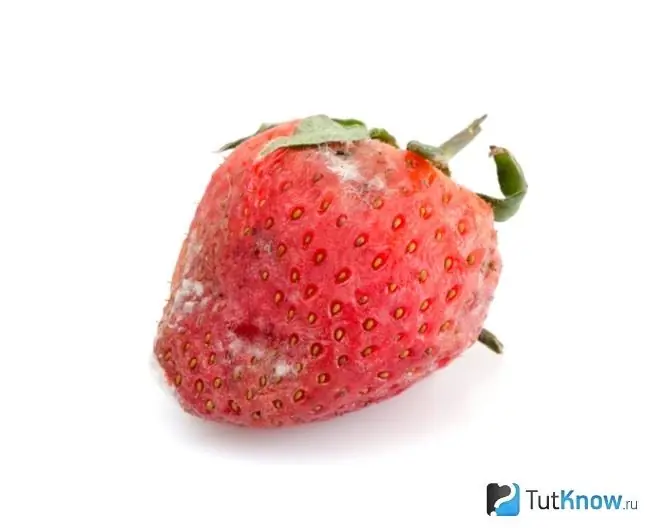
Powdery mildew on strawberries manifests itself as follows: the affected leaves curl up in a boat and gradually turn purple with a white bloom. When this disease manifests itself during the flowering period of the plant, the flowers of the garden strawberry are poorly pollinated, so the berries form ugly. They become covered with bloom, acquire a mushroom smell and taste.
To prevent this disease, the strawberry plantation is sprayed with a copper-soap emulsion before flowering. It is prepared as follows: in 10 liters of water add 30 grams of "Azocene", soap, copper sulfate, 15 grams of the drug "Topaz".
Strawberry pests
Insects and birds are no less dangerous for strawberries. The following is a list of pests of garden strawberries, these are nematodes, spider mites, strawberry mites, wasps, aphids, birds.
Strawberry nematode on strawberries
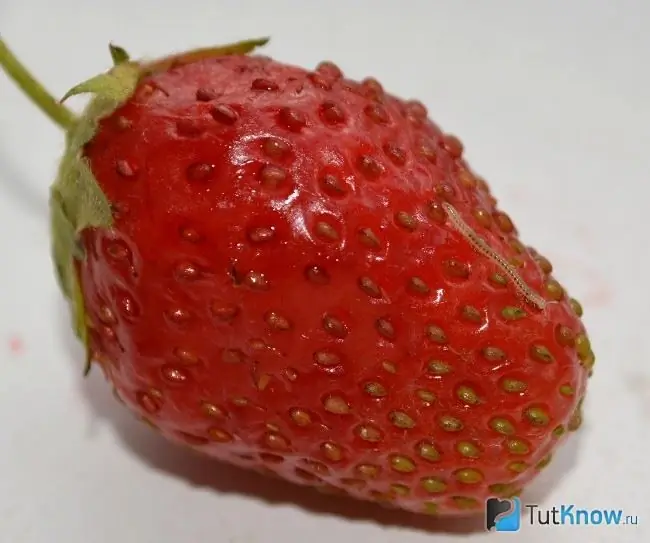
If the young leaves of the strawberry curl, deform, the petioles grow small, and the bush becomes brittle, it is likely that the reason for this is the small worms 0.5-1 mm long, called nematodes. The pest is dangerous because it multiplies quickly, and the plants affected by it almost do not bear fruit. If the berries are still tied, then they are small and deformed.
In order to prevent the appearance of this pest on plants, remember that you cannot plant strawberries in the place where Rosaceae grew less than 7 years ago. Plant only healthy seedlings, but first put the strawberry "mustache" in a container of water, the temperature of which is + 46 ° C, and then in cold water for 15 minutes. Then land. If, during the development of the bushes, you notice the first signs of a nematode on the plant, dig it up and destroy it without pity.
Spider mite on strawberries
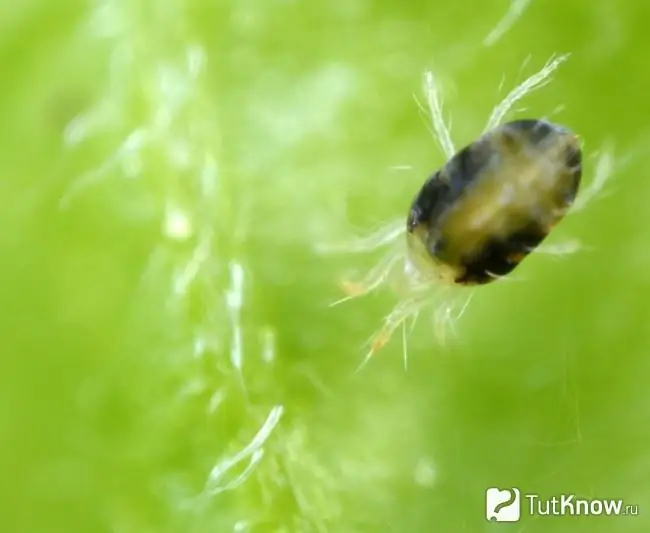
A spider web on the leaves is the first sign of a pest. Then the leaves turn yellow and dry. Spraying the bushes with a solution of "Karbofos" after the end of fruiting helps to get rid of the tick. The strawberry plantation processed in this way is covered with foil for 3 hours. This method also helps to fight the weevil, whitefly, strawberry beetle.
If more than 80% of plants are affected by a spider mite, after the end of fruiting and until mid-August, strawberry bushes must be mowed. This must be done no later than this period, so that leaves grow on the plants before the cold weather.
Strawberry mite on strawberries
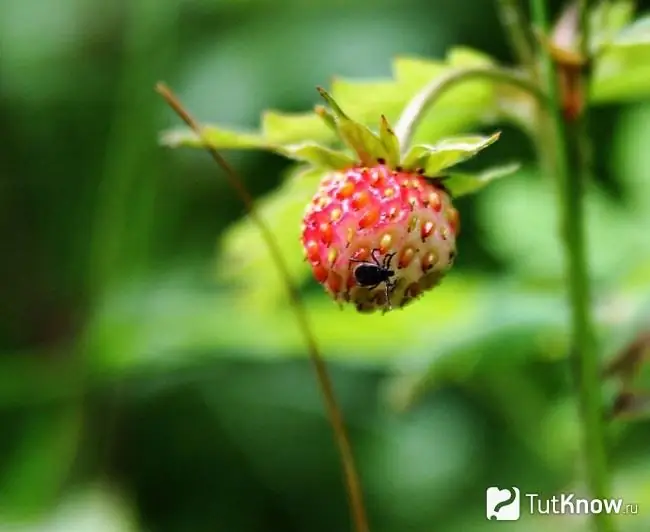
Measures to combat this dangerous pest are almost the same as with a spider mite. Strawberry females become active after winter early. Already with the first rays of the warm spring sun, they lay eggs on young strawberry leaves that have just begun to grow and suck the juice out of them. Because of this, the leaves wrinkle, become oily, and the berries on the bush form very small.
So that the strawberry mite does not settle in all the plantings of strawberries and does not completely destroy the plants, it is necessary to fight with it. As well as against spider mites, 10-15 minutes disinfection in hot water, the temperature of which reaches + 46 ° C, is used against strawberry mites, followed by washing in cold water for the same time and drying in a dark room for 5-8 hours.
If, nevertheless, the bushes were struck by a pest, after green leaves appeared on them in the spring, the plants are treated with the drug "Karbofos" or "Colloidal sulfur". For 10 days before the beginning of flowering, you need to treat with the drug "Neoron". In case of severe tick damage, the plants are mowed.
Other pests of strawberries
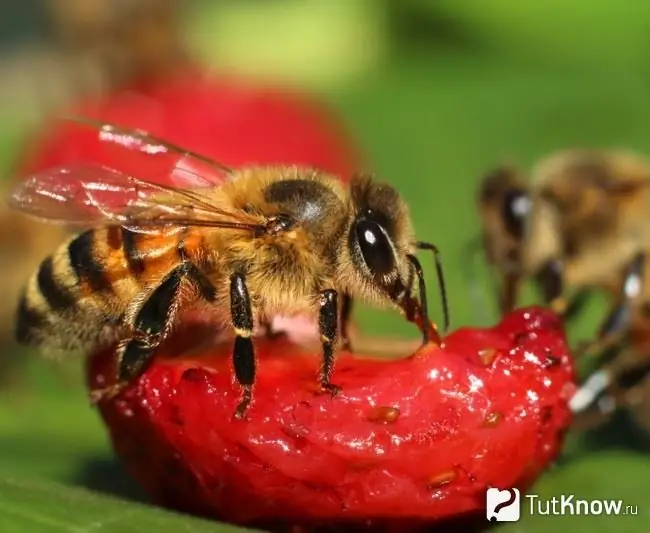
Wasps do not mind eating ripe berries. To distract them from the fruit, place containers with sweet compote around the strawberry garden.
Aphids can also damage crops. It will help to destroy it, a means harmless to people. Pour 4-5 heads of garlic with 3 liters of cold water and leave for a week. After that, strain the product and spray uninvited guests with it.
Henna will also help get rid of them. Pour one 25-gram sachet into 1 liter of boiling water, stir, let it brew for 2 hours, strain and spray the plants.
To prevent the birds from pecking the berries, place small red glass balls on the plantations before they ripen. Having tried them, the birds will not dare to peck ripe berries of the same color, since they will think that they are one and the same.
Watch a video about caring for strawberries:

These simple tricks, recipes, preparations will help you get guaranteed yields, feast on garden strawberries and make delicious blanks out of them!






